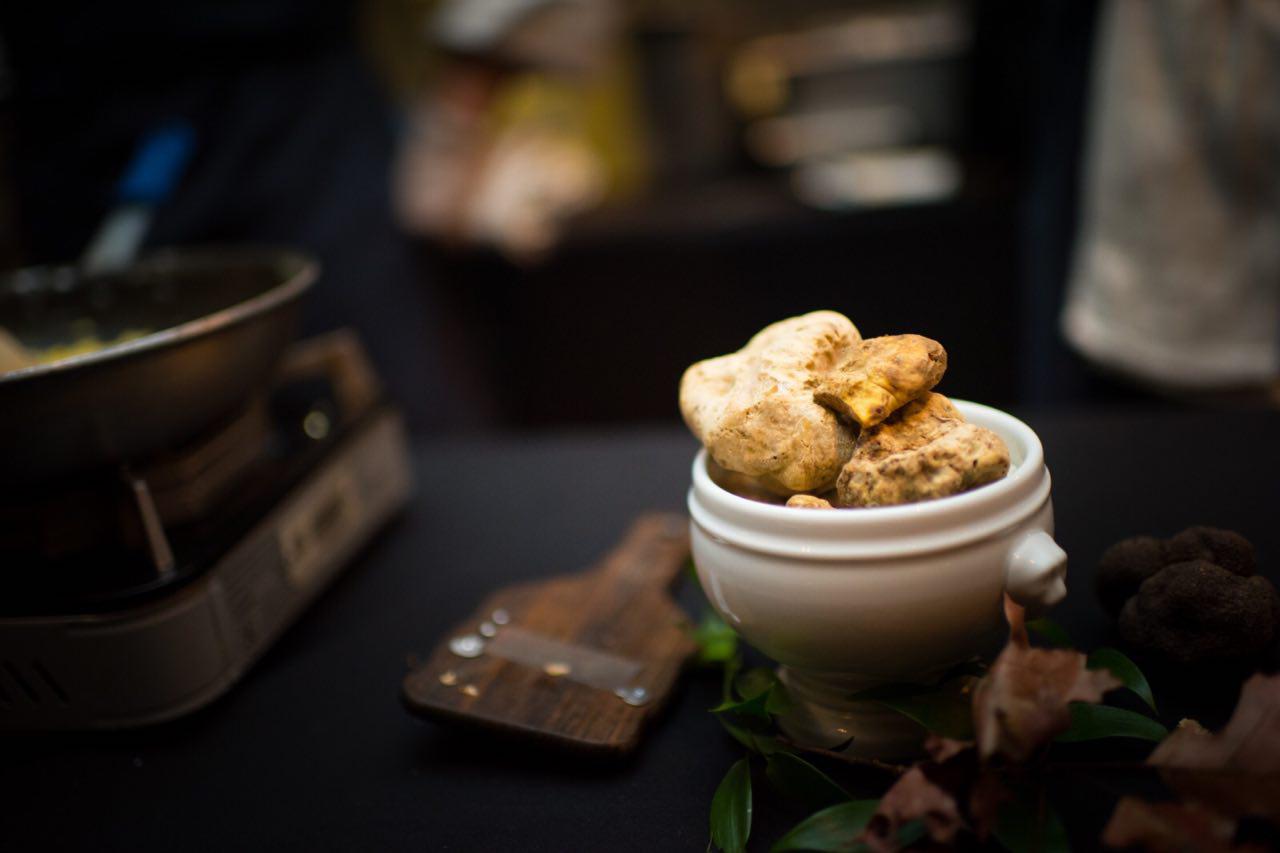A few thousand dollars a pound seems like a lot to pay for a mushroom. It does. But we are talking about the diamonds of gastronomy in the middle of White Truffle Festival, the time of year when the rare fungi are showered on dishes, signifying luxury even to the most jaded palates.
Italian jewel, the Alba White Truffle is world-renowned for its quality and value. Being collected mostly in the regions of Piedmont, Emilia Romagna, Tuscany, Umbria, the Alba white truffle comes in various shades of color, ranging from white with pink veining to amber/grey with darker veining, depending on the host tree it lives off. White truffles that developed on oaks will have a darker reddish gleba (flesh), while truffles that are growing on poplars will have a yellowish gleba, and those growing on willows will be almost white. Their aroma will also differ a little according to the host tree.
Unlike their botanical name suggests (Tuber genus), truffles are not tubers, but wild, underground fungi (mushrooms) that grow symbiotically with the roots of their host trees. White truffles grow on different species of oaks and poplars, willows, hazel trees and linden trees. They can reach 12cm in diameter and weigh up to 500g or more, though they are usually between 150 and 400g.
But what makes Tuber Magnatum Pico the King of the kitchen?
While black truffles sometimes act as an ingredient in a dish, white truffles are almost exclusively used as a condiment. The, strong, pleasant smell of white truffle is intense, yet sensitive to heat. White truffles need to be consumed raw, as a precious finishing touch to top a fairly neutral dish.
White truffles should always be sliced with a special truffle slicer, and never grated. The recommended quantity is 10 grams per dish, but if the white truffle is of excellent quality and perfectly ripe, 6 to 8 grams may suffice.
The fact that white truffles should be consumed as fresh as possible, within a maximum of 5-7 days after the purchase is making them even more exclusive. Truffles have to be kept rolled in paper towels and placed in glass containers closed inside the fridge (no under 3°), with the paper towels changed daily.
White Truffles are nearly impossible to cultivate because recreating the necessary growing conditions is both difficult and costly and it can take years to yield truffles and decades to turn a profit. And in addition to their rarity, truffles lose about 5 percent of their weight every day, so they have to be harvested, processed and shipped as quickly as possible.
So where to start?
To get the most out of white truffle, it’s best served as simply as possible — not cooked, but finely sliced over a warm dish, which brings out its aroma. Shave your truffle over creamy tagliatelle — use only premium fresh pasta and a generous amount of Parmigiano-Reggiano.
Discover the world’s finest gastronomic delight in our online store.
Credits to source/owner
https://www.urbani.com/news-and-events/everything-there-is-to-know-about-white-truffle/

